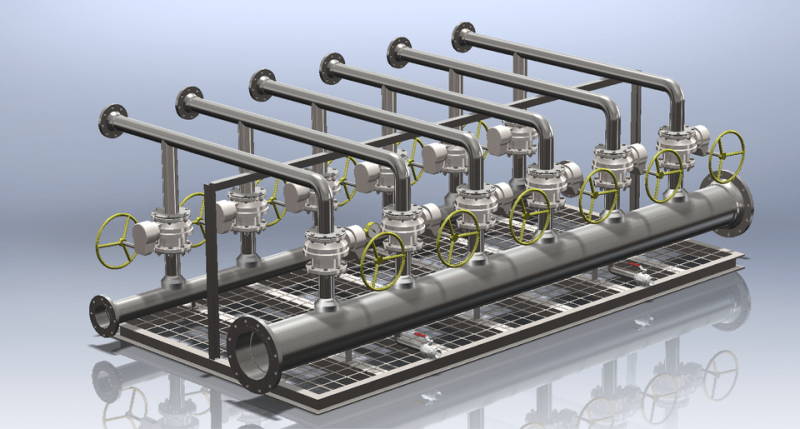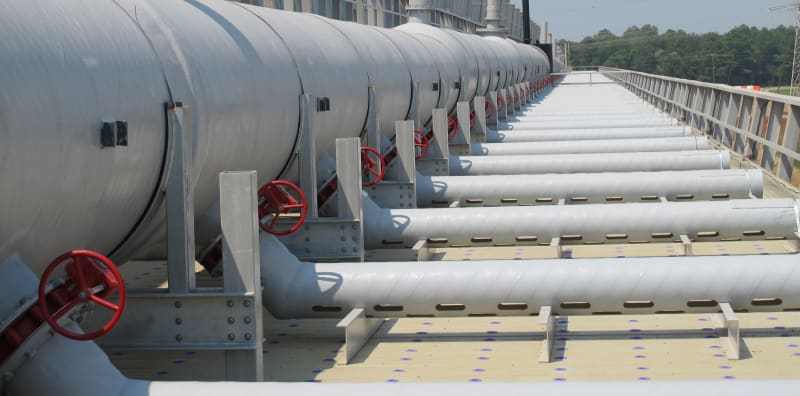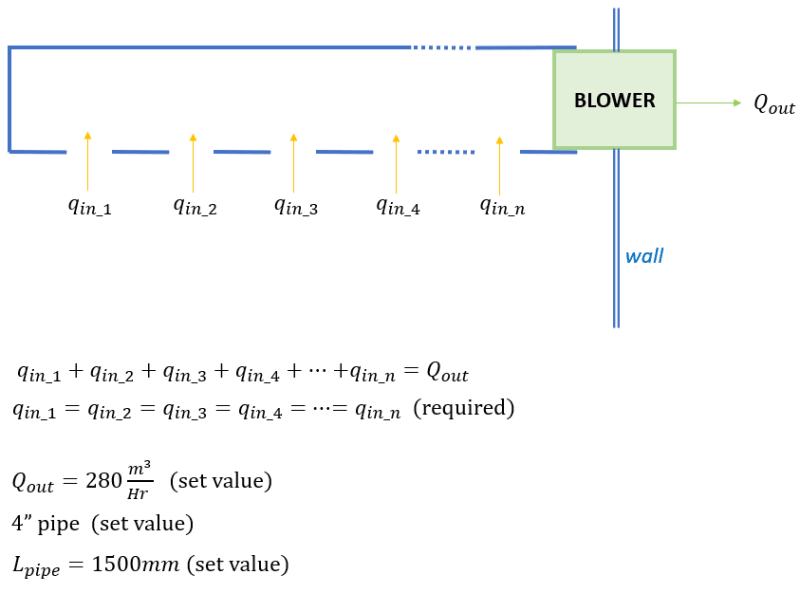Helepolis
Mechanical
- Dec 13, 2015
- 206
Hi all,
A little disclosure before my question, the last time I had anything to do with fluid mechanics was 7 years ago so if my question is somewhat trivial don't be too harsh on me.
Now to my questing:
Given that I have (something of) a combining manifold (single outlet and multiple inlets), the structure of the manifold is a straight pipe with a blower at one end (the opposite end is closed) and several inlet openings along the pipe's wall (the inlet holes are on the pipe itself, no extensions).
In case I want equal flow rates from all the inlets, which means that I have to "adjust" the cross section of the inlets (intuitively the closer the inlet to the blower the smaller the opening should be to restrict the flow).
How should I approach this problem, given that the Q_out and pipe dimensions are known.
After searching a bit I found some sources that use the Bernoulli's equation and other sources use the 'generalized macroscopic energy balance', in any case I'm lost.
Thanks,
SD
A little disclosure before my question, the last time I had anything to do with fluid mechanics was 7 years ago so if my question is somewhat trivial don't be too harsh on me.
Now to my questing:
Given that I have (something of) a combining manifold (single outlet and multiple inlets), the structure of the manifold is a straight pipe with a blower at one end (the opposite end is closed) and several inlet openings along the pipe's wall (the inlet holes are on the pipe itself, no extensions).
In case I want equal flow rates from all the inlets, which means that I have to "adjust" the cross section of the inlets (intuitively the closer the inlet to the blower the smaller the opening should be to restrict the flow).
How should I approach this problem, given that the Q_out and pipe dimensions are known.
After searching a bit I found some sources that use the Bernoulli's equation and other sources use the 'generalized macroscopic energy balance', in any case I'm lost.
Thanks,
SD



